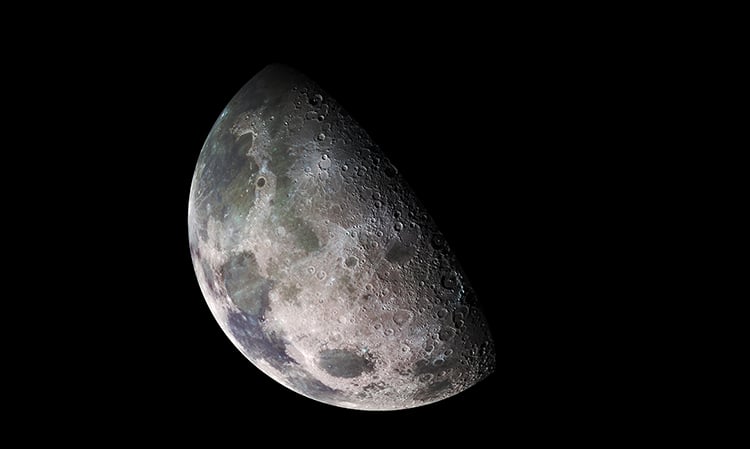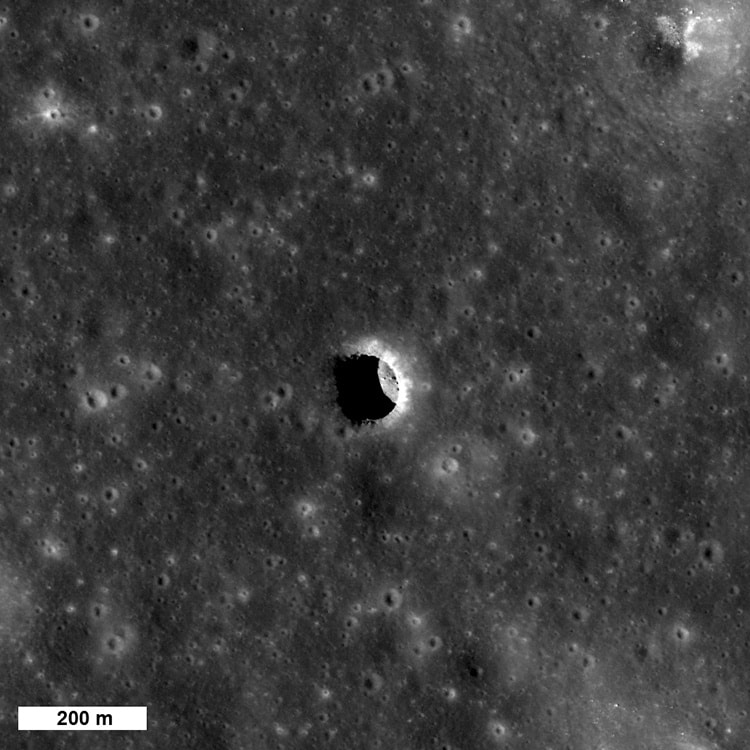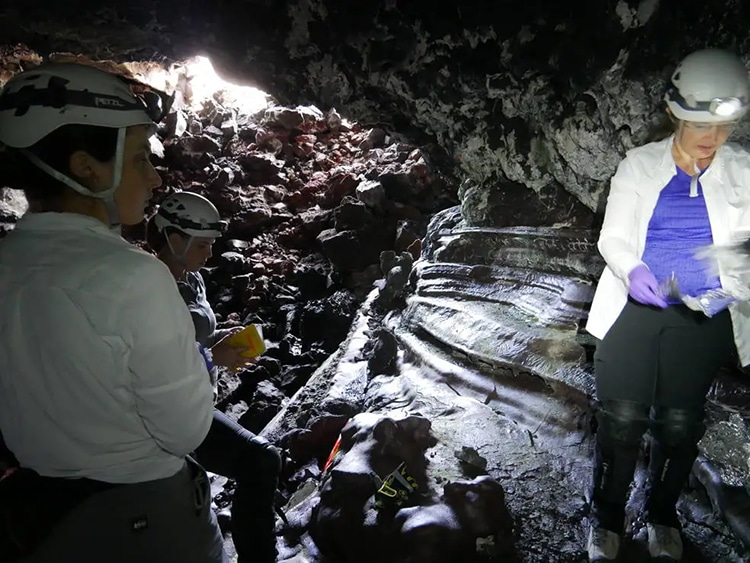Photo:NASA/Goddard/ASU
As beautiful as the Moon is, its surface is not especially hospitable to humans.
Scientists have been theorizing about lunar caves for at least 50 years.
The radar imaging of this 300-foot-wide pit has now been reanalyzed using new signal processing techniques.

Photo:NASA/Goddard/ASU
On the east side, it’s even deeper at 443 feet.
Its certainly possible to get in and out, but it will take a significant amount of infrastructure.
The research implications of having access to lunar caves would also be wide-reaching.

Photo: NASA/GSFC/Arizona State University
The geological record from inside the caves will provide billions of years of information.
This data would aide researchers in understanding both volcanoes and the formation of the Moon.
Its really exciting, Carrer says.

One of many large pit craters so far found on the Moon — do these pits provide access to open lava tubes? Image is 1170 meters wide. (Photo:NASA/GSFC/Arizona State University)
Image is 1170 meters wide.
This image from LROs Narrow Angle Camera is 400 meters (1,312 feet) wide, north is up.

This is a spectacular high-Sun view of the Mare Tranquillitatis pit crater revealing boulders on an otherwise smooth floor. This image from LRO’s Narrow Angle Camera is 400 meters (1,312 feet) wide, north is up.(Photo: NASA/Goddard/Arizona State University)

This image was taken in August 2019 inside a lava tube near Hawaii’s Mauna Loa volcano, where scientists had come to study the microbes and minerals that could reveal insights about similar extra-terrestial environments. (Photo:NASA/Goddard)